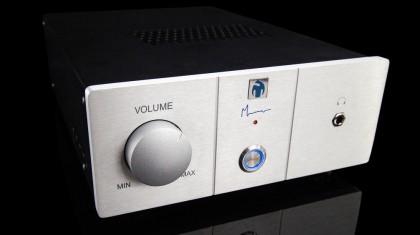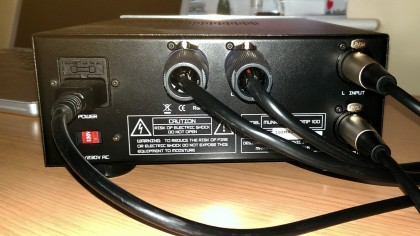TechRadar Verdict
The MunroSonic Egg100 monitors are the ideal setup for a home studio, or for the dedicated audiophile DJ desperate to get consistent audio reproduction. But that consistency and clarity comes at a high price.
Pros
- +
Unique design
- +
Separate amplifier module
- +
Integrated headphone amp
- +
Excellent sound
Cons
- -
Lingering rubber smell
- -
At £899 they're not cheap
Why you can trust TechRadar
The MunroSonic Egg100 system is a passive nearfield monitor setup designed by renowned soundman Andy Munro, and manufactured here in the UK in partnership with Sonic Distribution.
Both are prominent names in the industry; they collaborated in 2011 as MunroSonic to release the Egg150s, a set of highly-rated speakers found in many professional recording studios today.
The Egg100 speakers take the same design principles and shrink them down ever-so-slightly.
Nearfield monitors are designed to be used in a studio setup with the speakers being placed close to the listener to avoid reverb from the room itself and deliver a true audio mix.
The Egg speakers themselves are made from a hard plastic composite with a 100mm woofer and a 25mm dome tweeter. They are also, as the name might suggest, egg-shaped, and each one sits in a moulded rubber base to stop them rolling around.
This also serves as a way to angle them both horizontally and vertically, meaning you can position the speakers exactly how you want them. They are intended to be used on a desktop, so angling them upwards helps stop sound waves reflecting off the surface of the table and distorting the audio.

The Egg100 system also comes with an external amplifier, which has a built-in headphone amp and twin two metre-long speaker cables with Speakon connectors.
The amp is simple in design, with a power button ringed with blue LEDs to show it's switched on, a nice big rotary volume control and a 6.35mm headphone socket.
It has attenuation potentiometers for bass and treble, for both left and right channels, but these are tucked away on the side of the unit and recessed so they require a screwdriver to adjust. This will stop you from constantly fiddling with the levels when you really don't need to.
Separates
Although somewhat old-school in approach, having a separate amplifier works well, and makes switching them on and off, or adjusting the Egg speakers' volume, nice and easy. It's certainly preferable to groping around behind a speaker, feeling for a switch or volume pot, like you have to with powered monitors.

The Speakon plugs on the speaker cables make setting up the Eggs very simple; you just slot them in and twist to lock in place. It means you can't accidentally wire them up out of phase, and they won't get pulled out either.
The integrated headphone amp is a nice touch too, controlled by the same dial as the Egg speakers, which are muted when you plug your headphones in. It definitely gave a richer, more refined sound than plugging them directly into my mixing desk or soundcard.
